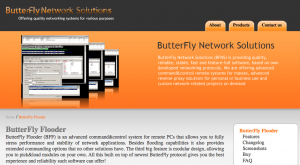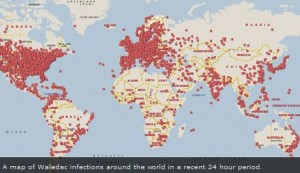A New York marketing firm that as recently as two weeks ago was preparing to be acquired now is facing bankruptcy from a computer virus infection that cost the company more than $164,000.
Karen McCarthy, owner of Merrick, N.Y. based Little & King LLC, a small promotions company, discovered on Monday, Feb. 15 that her firm’s bank account had been emptied the previous Friday. McCarthy said she immediately called her bank – Cherry Hill, N.J. based TD Bank – and learned that between Feb. 10 and Feb. 12, unknown thieves had made five wire transfers out of the account to two individuals and two companies with whom the McCarthys had never had any prior business.
“She was told to go to the branch next day, and she did, and the people at the branch were very nice, apologetic, and said, ‘Whatever happened, we’ll replace it,’” Karen McCarthy’s husband Craig said. “She called them up on Wednesday, and they gave her the runaround. Then she finally got to talk to someone and they said ‘We don’t see the error on our side.’”
Immediately before the fraud occurred, Mrs. McCarthy found that her Windows PC would no longer boot, and that the computer complained it could not find vital operating system files. “She was using it one day and then this blue screen of death just came on her screen,” said a longtime friend who was helping McCarthy triage her computer.
Later, McCarthy’s friend would confirm that her system had been infected with the ZeuS Trojan, a potent family of malware that steals passwords and lets cyber thieves control the infected host from afar. ZeuS also includes a feature called “kill operating system,” which criminals have used in prior bank heists to effectively keep the victim offline and buy themselves time to make off with the cash.
Karen McCarthy said TDBank has dug in its heels and is now saying it has no responsibility for the loss.
“They feel that because [the thieves] compromised my computer that it’s my responsibility and that I should look into my insurance, but I don’t have insurance,” McCarthy said. “I had a company that was interested in purchasing us, but they’re not going to do that now. I’m basically looking at bankruptcy, because I have very little money to operate on now.”
Krebsonsecurity spoke briefly with John G. McCluskey, vice president of TDBank’s corporate security and investigations. McCluskey referred all questions about the incident to the bank’s marketing department, which hasn’t returned calls seeking additional information and comment.
Continue reading →










